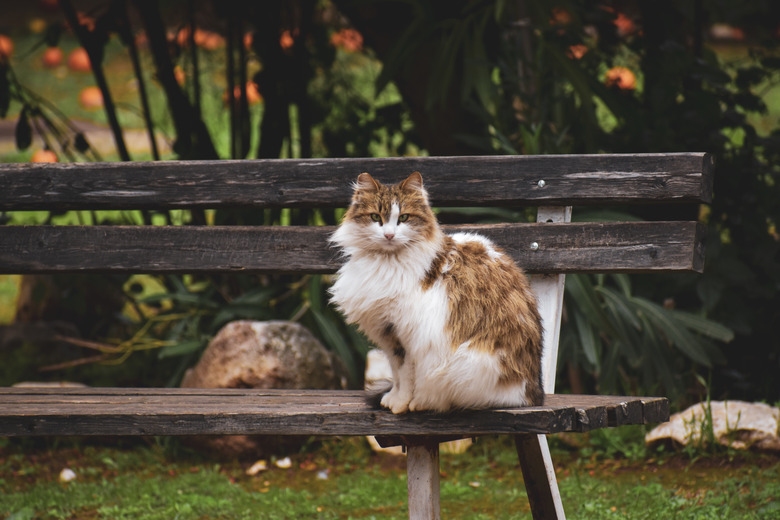When Do Cats Stop Growing? Reliable Ways To Know When Cats Reach Their Full Size
Kittens are basically living, breathing, fuzzy cuteness and it can take 18 months to four years for them to reach their full size. We love seeing their adorable eyes, and we love hearing their sweet little mews. But one of the main things that we can't get over is a kitten's adorable size. We know they can't stay that way forever, but we love seeing how adorably tiny baby cats are.
Yet no matter how much we may want them to stay small, a kitty has to grow up. But at what age do cats stop growing? And how will we know when our cat is fully grown?
The life cycle of cats
The life cycle of cats
Before we dive into how and when cats grow, it's good to understand the basic life stages of a cat. The exact dates vary from cat to cat, but the feline life cycle can be broken down into five stages.
- Kitten (0-6 months old): Cats grow fastest and change the most in this early stage of development. It's also their most impressionable phase.
- Junior (6 months old to 2 years old): Cats continue their growth and maturity. It's important to keep playing with your cat during this stage so that it feels comfortable and confident.
- Prime Adult (3-6 years old): At this stage, cats have settled into their lives, and they're usually in their healthy prime.
- Mature Adult (7-10 years old): Much like humans, cats become less active as they age, and they're more prone to gain weight and develop health issues like kidney disease and diabetes.
- Senior (11-14 years old): Cats' lifespans vary, but as they become senior cats, their health often begins to deteriorate.
When cats reach full size
When cats reach full size
How long do cats take to grow? Most experts agree that cats reach adulthood at 12 months old, which means this is the age where their personalities have matured and solidified into how they'll behave throughout their adult lives. However, a cat doesn't grow with the same consistency. In fact, cats reach full size anywhere between 18 months to 4 years of age.
Kitten growing stages
Kitten growing stages
After kittens are born, they usually double their size in their first week. After their first week, kittens grow an ounce about every three days. Since they are usually born weighing about 3.5 ounces, their growth rate during their first year of life outpaces growth in any other stage in their life cycle.
Sometime around the third or fourth week, kittens will begin to stand and toddle about. Around 16 weeks, the kitten growth rate starts to slow as they pass their quickest development and most impressionable stage.
Cat breeds growth rate
Cat breeds growth rate
A cat's breed also affects its rate of growth. Unsurprisingly, the larger breeds take longer to stop growing because they've got further to go to reach maturity. Maine coon cats, the largest breed of cats, can take up to 4 years to reach their full size.
Factors that affect growth rate
Factors that affect growth rate
Feline growth isn't only affected by breed, but also by diet. Kittens need to consume a massive amount of daily calories during their first stages of life to reach their proper size. However, if cats aren't fed properly, then their growth can be stunted, which is why many shelter kittens are smaller in size than their re-homed counterparts.
In addition to diet and breed, the age at which a cat is spayed or neutered also affects the growth rate. According to recent studies, a cat that is spayed or neutered early in life will grow larger than a cat that wasn't until adulthood. Also, some diseases like dwarfism and bone deformities can cause an afflicted cat's growth to be stunted.
Recognize a full-size cat
Recognize a full-size cat
While it is true that cats can continue to grow after the first year, their growth rate will slow down significantly afterward. In fact, if you're not paying strict attention, you might not even notice that they're growing! The best way to understand when your cat has stopped growing is to measure and weigh it each month. Cats continue to gain height (ground to top of shoulder) as well as length. If you measure your kitty once per month, you'll notice when those measurements stop changing.
A cat's weight can also reveal their maturity level or approximate age. You can estimate your cat's adult weight by weighing them when they're 16 weeks old and doubling that number. You can expect that figure will be right around your cat's adult weight. It's not exact, but it's a good estimate. Similar to measuring a cat's height and weight, weighing a cat monthly can also aid in determining when he or she reaches full size.
No matter how big your cat gets, it will always need giant-sized portions of love, affection, and snuggles.


